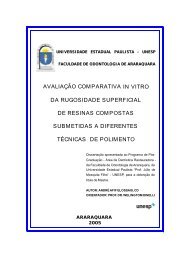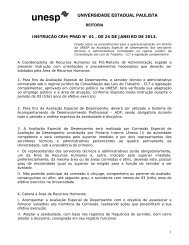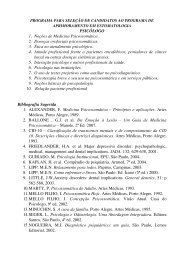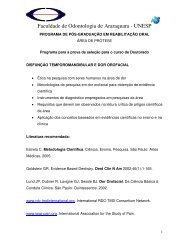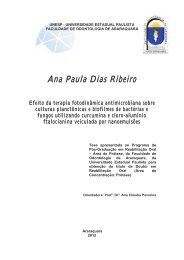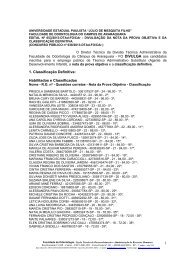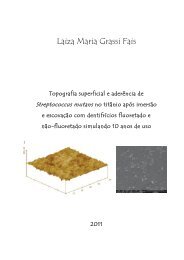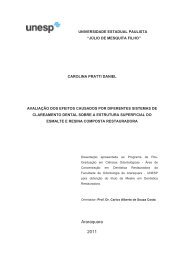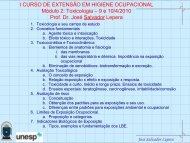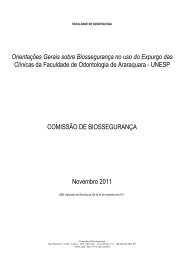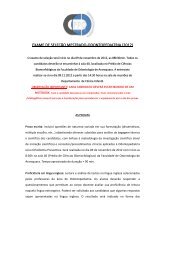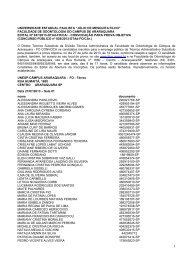universidade de são paulo - Faculdade de Odontologia - Unesp
universidade de são paulo - Faculdade de Odontologia - Unesp
universidade de são paulo - Faculdade de Odontologia - Unesp
Create successful ePaper yourself
Turn your PDF publications into a flip-book with our unique Google optimized e-Paper software.
135<br />
Introduction<br />
An important step in the pathogenesis of <strong>de</strong>nture stomatitis is the<br />
attachment of Candida albicans to <strong>de</strong>nture surfaces, followed by biofilm<br />
formation [1-2]. The physicochemical characteristics of the <strong>de</strong>nture materials,<br />
such as roughness [3-5], electrostatic charge [1, 6] and surface free energy [1, 7-<br />
8], may consi<strong>de</strong>rably influence C. albicans adhesion. In the oral environment,<br />
however, the <strong>de</strong>nture surfaces are coated by a thin film of saliva known as<br />
salivary pellicle. Saliva is an exocrine secretion produced by different salivary<br />
glands [9], consisting of water, electrolytes, and proteins [9-10]. Various functions<br />
have been attributed to saliva, among them antimicrobial properties due to the<br />
presence of immunologic and non-immunologic proteins [10]. However, saliva<br />
also possesses proteins that could act as receptors, to promote the initial microbial<br />
adhesion [11-13], and as a source of water and nutrients for growth and<br />
reproduction of microorganisms [14]. Thus, besi<strong>de</strong>s non-specific surface<br />
properties, yeast adhesion can also be influenced by specific receptors in the<br />
acquired salivary pellicle [11-13].<br />
In this context, to <strong>de</strong>velop new strategies for preventing <strong>de</strong>nture stomatitis,<br />
it is essential to evaluate the influence of salivary pellicle on Candida adhesion to<br />
<strong>de</strong>nture surfaces. However, the interactions between biomaterials, salivary pellicle<br />
and C. albicans are complex [15], and the effect of saliva on C. albicans adhesion<br />
still remains controversial. While some researchers have found that the salivary<br />
pellicle increases C. albicans colonization on the materials [11-13, 16-21], others



